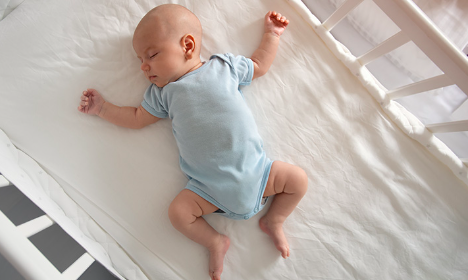As a sleep coach, one of the most common questions I get from parents is how to transition their baby from three naps to two. This can be a challenging transition for both babies and parents, but with a few simple tips, it can be a smooth and successful process.
First, it’s important to note that every baby is different, and there is no one-size-fits-all approach to this transition. However, most babies are ready to drop their third nap between 6-9 months of age. Signs that your baby is ready to drop their third nap include fighting the third nap, consistently taking short naps, and sleeping well at night.
The first step in the transition is to gradually lengthen the time between the second and third nap. Start by pushing the third nap back by 15 minutes each day until it’s eventually dropped. This gradual approach helps your baby adjust to the new schedule without becoming overtired.
Once the third nap is dropped, your baby will likely be taking two longer naps each day. The timing of these naps can vary, but a common schedule is a morning nap around 9 am and an afternoon nap around 1 pm. It’s important to stick to a consistent schedule as much as possible, as this helps regulate your baby’s internal clock and promotes better sleep.
During this transition, it’s also important to make sure that your baby is getting enough sleep overall. According to the American Academy of Pediatrics, babies between 6-12 months of age need around 12-16 hours of sleep per day, including naps and nighttime sleep. If your baby is consistently taking short naps or having trouble sleeping at night, they may need more sleep overall.
To help your baby adjust to the new schedule, create a consistent bedtime routine that includes calming activities such as a bath, a story, or a lullaby. This helps signal to your baby that it’s time for sleep and promotes relaxation.
It’s also important to create a sleep-conducive environment for your baby. This includes a dark, quiet room with a comfortable temperature and a consistent sleep environment, such as a crib or bassinet. According to a study published in the journal Pediatrics, a consistent sleep environment can help promote longer, more restful sleep in babies.
Finally, be patient and flexible during this transition. Your baby may need some time to adjust to the new schedule, and there may be days where naps are shorter than usual or nighttime sleep is disrupted. This is normal, and it’s important to remain consistent and supportive as your baby adapts to the new routine.
In conclusion, transitioning from three naps to two can be a challenging process, but with a few simple tips, it can be a smooth and successful transition for both babies and parents. By gradually lengthening the time between naps, sticking to a consistent schedule, creating a sleep-conducive environment, and being patient and flexible, you can help your baby adjust to the new routine and promote better sleep overall.
If your little one isn’t sleeping well or you are unsure if they are ready to transition from three to two naps then let’s chat. I’d be happy to hear your concerns, answer your questions and offer solutions for your baby’s sleep. Click below to book a call with me at your most convenient time and get better sleep now.

